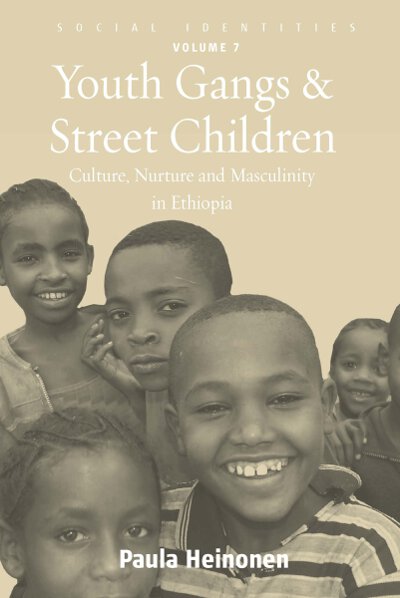Paula Heinonen’s decade of research and reflection led to the publication of Youth Gangs and Street Children: Culture, Nurture, and Masculinity in Ethiopia, which was published as a paperback in June 2013. Based on careful observations and interviews, the volume provides insight into common misconceptions of why Ethiopian boys and girls take to the street.
______________________________________________

Before embarking on my six years longitudinal field research and four years of follow-up enquiry and reflection, I read extensively on the street children phenomena worldwide.
Generally speaking, the root causes for their presence in the street were explained or explained away by recycling the same plethora of injustices facing them, i.e. poverty, violence against and among them, marginalisation, vagrancy, criminality, and drug use.
Shortly after beginning my fieldwork, I was made aware that far from being a homogenous group, home-based street children came from different backgrounds, with different or mixed ethnic origins, and lived in varied types of households. Homeless girls and boys lived in multifarious gangs. These were not abandoned children. The great majority were runaway kids who had made the conscious choice of abandoning their families. Gang life did not provide the nurturing or emotionally supporting atmosphere they sought, but became a descent into another kind of hell.
Most of the plights associated with streetism were present in the lives of the children I worked with. However, the book goes beyond such representation to show how the street children and youth gangs’ members interacted with one another, their siblings and families as well as other familial or unfamiliar adults in the street, in schools, and within the communities they lived on a daily basis.
Another recurrent theme contained in the literature is the notion of street-children being part of a subculture, at times with their own lore and language. Subculture assumes the existence of a cultural group within a larger culture, often having beliefs or interests at variance with those of the larger culture. This long-term study shows that in reality street children—rather than being free from ‘wider’ cultural constraints or the adult-organized social world—are obliged to strategize within its boundaries for their survival.
In no way do they seek to conceptualize, develop or maintain a subculture. They beg from adults, they sell things to adults and constantly have to deal with non-familiar adults in the street, and within the communities where they lived. Their very survival depends on this adult/child interaction. Home-based children and youth gangs are not a counter culture or a sub-culture, but a distorted microcosm of Ethiopian society. Their morality and worldview does not differ from what exists within the ‘wider’ Ethiopian culture. The problem is that they have to co-exist in a sub-cultural life of poverty and child abuse where they are forced to break rules and make new ones to get along.
Masculinity and masculine ideals of being male and female are formed, shaped and managed through acculturation by family, society and shared by both sexes. In the socializing process, the emphasis is put on the adults’ role as parents. The book provides empirical evidence of a reverse reality with even pre-pubertal children assuming the role of homemakers, breadwinners and parenting their able-bodied parents and siblings.
By defining and using yilunta (honor, shame, family pride) as an analytical tool, I relate how male hegemony in the wider Ethiopian culture brings forth a unifying theme that connects the street children with larger cultural values and how they experience it. Intra-gang notions of yilunta, masculine pride and violence are not only the practice of the street but come to be a practice of inter-gender relations, and how sexual maturity and societal expectations of male adulthood complicate the picture of being and becoming a ‘man’. I also indicate how the shared cultural notions of yilunta and masculinity by the educated elite and diaspora Ethiopian communities are differently enacted within family contexts.
Using and analyzing the data through the prism of gender and masculinity from the perspective of the children and their families, the book shows how they experience it, and in the process unravels the connection between social relations and social practice as well as the crucial importance of including the voices of the children in the discourse during analysis and representation. The book sets the children firmly within the social milieu they live including their extended families, the street, schools, prisons, the public, NGOs and state actors. It also locates the social and cultural reality of street children lives within the broader Ethiopian culture without treating them as an undifferentiated social group.
___________________________________________
Paula Heinonen (née Sinicco) is of Ethiopian/Italian parentage and grew up in Addis Ababa. She is College Lecturer in Gender Studies and the Anthropology of Development at Hertford, University of Oxford. Previously, she was Tutor and Visiting Fellows Program Coordinator at the International Gender Studies Centre, University of Oxford and Senior Lecturer in Anthropology and Head of Research at the University of Addis Ababa, Ethiopia.
